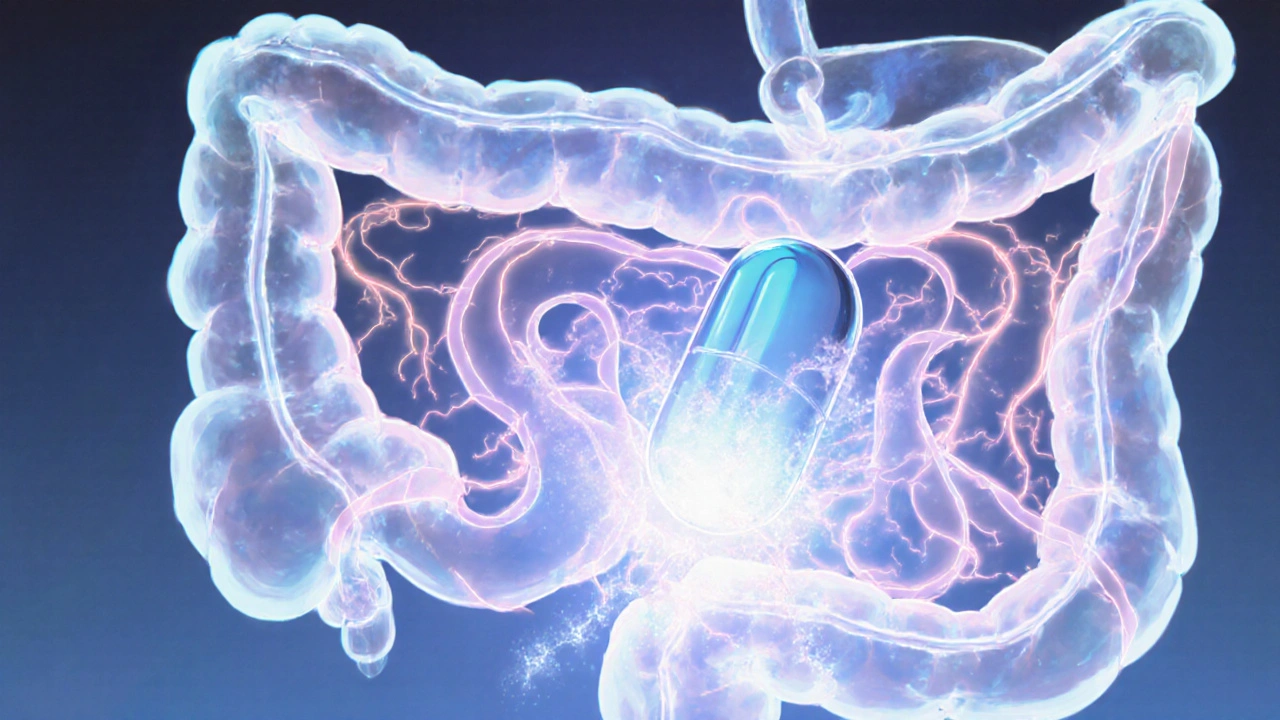Key Takeaways
- Ezetimibe blocks cholesterol absorption in the gut and is a solid option for patients who can’t tolerate high‑dose statins.
- Statins remain the most potent first‑line therapy, cutting LDL‑C by 30‑50% on average.
- PCSK9 inhibitors deliver the deepest LDL reductions (up to 60%) but cost is a major barrier.
- Bile‑acid sequestrants, niacin, and fibrates have niche roles, often in combination with other agents.
- Choosing the right regimen depends on cardiovascular risk, liver/kidney function, drug interactions, and insurance coverage.
When doctors talk about lowering bad cholesterol, the conversation usually circles around Ezetimibe is a cholesterol‑absorption inhibitor that targets the Niemann‑Pick C1‑Like 1 (NPC1L1) protein in the small intestine, reducing the amount of dietary and biliary cholesterol that enters the bloodstream. It’s often prescribed when patients can’t reach LDL‑C goals with statins alone or experience intolerable side effects. But how does it stack up against other options on the market? This guide walks through the most common alternatives, compares their mechanisms, typical dosing, efficacy, safety, and cost, and helps you decide which mix might fit a given patient profile.
How Ezetimibe Works
Ezetimibe’s niche lies in its gut‑centric action. By binding to NPC1L1 on enterocytes, it blocks about 50% of intestinal cholesterol absorption. The liver senses the shortfall and up‑regulates LDL receptors, pulling more LDL‑C out of the circulation. Because the drug works outside the liver, it carries a low risk of hepatic enzyme elevations, a common complaint with statins.
Typical adult dosing is 10 mg once daily, taken with or without food. In most trials, adding ezetimibe to a moderate‑intensity statin shaved an extra 15‑20% off LDL‑C levels, translating to roughly 10‑15 mg/dL absolute reduction.
Main Alternatives Overview
Below are the big players you’ll encounter when tailoring therapy. Each has a distinct biochemical target, efficacy range, and side‑effect profile.
Statins
Statins are HMG‑CoA reductase inhibitors that block cholesterol synthesis in the liver, leading to up‑regulation of LDL receptors and substantial LDL‑C reduction. They remain the gold standard for primary and secondary prevention of cardiovascular disease.
Common agents include atorvastatin, rosuvastatin, and simvastatin. Doses vary from low (10 mg) to high (80 mg) intensity, with LDL‑C drops ranging from 30% to 50%.
PCSK9 Inhibitors
PCSK9 inhibitors are monoclonal antibodies that bind to proprotein convertase subtilisin/kexin type 9 (PCSK9), preventing it from degrading LDL receptors on hepatocytes. By preserving LDL‑R numbers, they dramatically increase clearance of LDL‑C.
Alirocumab and evolocumab are administered subcutaneously every two to four weeks. Clinical trials report 50‑60% LDL‑C reductions, even on top of maximally tolerated statins.
Bile Acid Sequestrants
Bile acid sequestrants are non‑systemic resins that bind bile acids in the intestine, forcing the liver to use more cholesterol to synthesize new bile acids, thereby lowering LDL‑C.
Cholestyramine, colestipol, and colesevelam are the main examples. They lower LDL‑C by 10‑20% but can cause gastrointestinal upset and interfere with absorption of other drugs.
Niacin (Vitamin B3)
Niacin is a water‑soluble vitamin that, at pharmacologic doses, inhibits hepatic VLDL synthesis and improves HDL‑C. While it can drop LDL‑C by 5‑15%, its use has waned due to flushing and hepatotoxicity.
Fibrates
Fibrates are PPAR‑α agonists that primarily lower triglycerides and modestly raise HDL‑C, with a small impact on LDL‑C. Gemfibrozil and fenofibrate are common choices for severe hypertriglyceridemia.
Side‑by‑Side Comparison Table
| Drug Class | Mechanism | Typical Dose | LDL‑C Reduction | Common Side Effects | Average Monthly Cost (US$) |
|---|---|---|---|---|---|
| Ezetimibe | Blocks NPC1L1‑mediated intestinal cholesterol absorption | 10 mg PO daily | 15‑20% (add‑on to statin) | GI upset, rare liver enzyme rise | ≈ 45 |
| Statins | Inhibits HMG‑CoA reductase (cholesterol synthesis) | 10‑80 mg PO daily (varies by agent) | 30‑50% monotherapy | Myopathy, elevated ALT/AST, rarely rhabdomyolysis | ≈ 10-20 (generic) |
| PCSK9 inhibitors | Monoclonal antibodies neutralize PCSK9 | 140 mg SC every 2 weeks (evolocumab) or 75 mg monthly (alirocumab) | 50‑60% (on top of statin) | Injection site reactions, nasopharyngitis | ≈ 1,200 |
| Bile acid sequestrants | Bind bile acids in gut, prompting hepatic cholesterol use | 4‑16 g PO daily in divided doses | 10‑20% | Constipation, bloating, drug‑nutrient interactions | ≈ 30 |
| Niacin | Inhibits hepatic VLDL synthesis, raises HDL‑C | 1‑2 g PO daily (extended‑release) | 5‑15% | Flushing, hyperglycemia, hepatotoxicity | ≈ 15 |
| Fibrates | Activates PPAR‑α to increase LPL activity | 200‑600 mg PO daily | 5‑15% LDL, 30‑50% TG | Gallstones, myopathy (with statins) | ≈ 25 |

Choosing the Right Agent for Your Patient
Start by gauging cardiovascular risk. For primary‑prevention patients with a 10‑year ASCVD risk below 7.5%, a moderate‑intensity statin often suffices. If LDL‑C remains above target (<70 mg/dL for very high risk), consider adding ezetimibe before jumping to pricey injectables.
High‑risk or statin‑intolerant patients may benefit from a PCSK9 inhibitor, provided insurance covers it. For those with severe hypertriglyceridemia (>500 mg/dL), fibrates are the first line, possibly combined with a statin if tolerated.
Kidney disease patients need caution with high‑dose statins; ezetimibe’s renal clearance is minimal, making it safer. Liver disease patients should avoid high‑dose statins but can usually handle ezetimibe and bile‑acid sequestrants.
Practical Checklist for Prescribers
- Assess baseline LDL‑C, triglycerides, liver enzymes, and renal function.
- Identify contraindications: active liver disease (statins), pregnancy (most drugs), severe hyperbilirubinemia (bile‑acid sequestrants).
- Determine insurance coverage: generic statins are almost always covered; PCSK9 inhibitors need prior authorization.
- Start low‑to‑moderate‑intensity statin when possible; add ezetimibe if LDL‑C > target after 4-6 weeks.
- Monitor labs at 6‑week intervals after any regimen change.
- Educate patients on potential side effects and adherence importance.
Safety Monitoring and Drug Interactions
Ezetimibe has few interactions because it isn’t metabolized heavily by CYP enzymes. However, it does share the same metabolic pathway (CYP3A4) as some statins, so dose‑adjustment may be needed for high‑intensity statins like atorvastatin 80 mg.
PCSK9 inhibitors have virtually no drug-drug interactions, but patients should be warned about possible antidrug antibodies after long‑term use.
Bile‑acid sequestrants can bind fat‑soluble vitamins (A, D, E, K) and certain antibiotics; spacing doses by at least 1 hour helps.
Niacin’s flushing can be mitigated with aspirin pretreatment or gradual titration.
Real‑World Scenario Illustrations
Case 1: 58‑year‑old male, ASCVD risk 22%, baseline LDL‑C = 130 mg/dL. He tolerates atorvastatin 20 mg but LDL‑C stays at 95 mg/dL. Adding ezetimibe 10 mg drops LDL‑C to 78 mg/dL, meeting the <70 mg/dL goal for very high risk.
Case 2: 62‑year‑old female with statin‑associated myopathy, LDL‑C = 150 mg/dL, high‑grade carotid plaque. She cannot use statins; a PCSK9 inhibitor (evolocumab 140 mg q2w) reduces LDL‑C to 60 mg/dL, but insurance requires a documented statin intolerance.
Case 3: 45‑year‑old with type 2 diabetes, triglycerides = 620 mg/dL, LDL‑C = 95 mg/dL. A fibrate (fenofibrate 160 mg) brings TG down to 190 mg/dL; a low‑dose statin is added later for LDL control.
Bottom Line
There’s no one‑size‑fits‑all answer. Ezetimibe shines as a low‑cost, well‑tolerated add‑on for patients who need that extra LDL‑C push without adding liver stress. Statins remain the powerhouse, PCSK9 inhibitors are the premium option for those who can afford them or have refractory disease, and older agents like bile‑acid sequestrants, niacin, and fibrates fill specific niches.
By matching the drug’s mechanism to the patient’s risk profile, comorbidities, and financial situation, clinicians can craft a regimen that hits the LDL target while keeping side effects manageable.
Frequently Asked Questions
Can I take ezetimibe without a statin?
Yes, ezetimibe can be used as monotherapy, but the LDL‑C reduction is modest (about 15%). Most guidelines recommend it as an adjunct to a statin unless the patient is statin‑intolerant.
How quickly does ezetimibe start working?
LDL‑C levels begin to fall within 2 weeks of starting therapy, with the full effect typically seen around 4‑6 weeks.
Is ezetimibe safe for people with liver disease?
Because ezetimibe is not metabolized heavily by the liver, it is generally safe for mild to moderate liver disease. Severe hepatic impairment still warrants caution and close monitoring.
Do PCSK9 inhibitors work without statins?
Yes, they can be used as monotherapy, but most guidelines advise adding them to the highest tolerated statin dose to maximize cardiovascular benefit.
What are the main reasons patients stop bile‑acid sequestrants?
Gastrointestinal side effects-especially constipation and bloating-are the top reasons. The large pill burden and drug‑nutrient interactions also lead to discontinuation.

